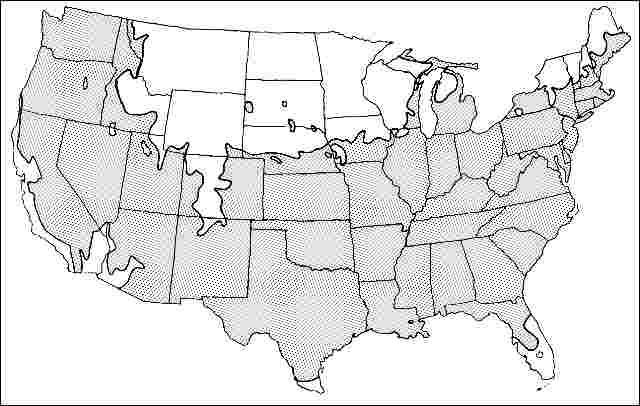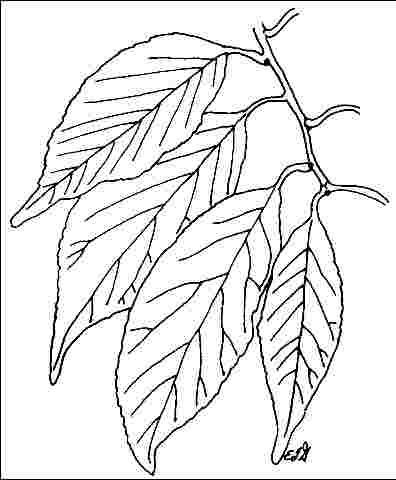Introduction
'Rosea' mountain silverbell grows into a 40-foot tree in its natural habitat but is about 20 to 30 feet tall in gardens and landscapes, with an upright-spreading crown. The tree prefers sandy loam and begins blooming when only 10 to 12 feet tall. The flowers are larger than those of Halesia carolina. The pale pink, bell-shaped blossoms are borne in clusters of up to five. Flowering occurs along last year’s branches in mid-spring on the previous season's wood. Because the flowers point downward, they are partially hidden by the foliage and best viewed from below. Other ornamental features are the yellow fall color and the bark, which peels off in large, flat scales. The pale-yellow fruits are quite attractive. Mountain silverbell may transplant poorly in the fall.

Credit: UF/IFAS
General Information
Scientific name: Halesia monticola
Pronunciation: hal-EE-zhee-uh mawn-tih-KOLE-uh
Common name(s): 'Rosea' mountain silverbell
Family: Styracaceae
USDA hardiness zones: 5A through 8B (Figure 2)
Origin: native to North America
Invasive potential: not assessed/incomplete assessment
Uses: specimen; street without sidewalk; tree lawn 4–6 feet wide; tree lawn > 6 ft wide; highway median; container or planter

Credit: UF/IFAS
Description
Height: 40 to 60 feet
Spread: 20 to 30 feet
Crown uniformity: irregular
Crown shape: vase, oval, pyramidal
Crown density: moderate
Growth rate: fast
Texture: medium
Foliage
Leaf arrangement: alternate (Figure 3)
Leaf type: simple
Leaf margin: serrate
Leaf shape: elliptic (oval), ovate
Leaf venation: pinnate
Leaf type and persistence: deciduous
Leaf blade length: 2 to 4 inches, 4 to 8 inches
Leaf color: green
Fall color: yellow
Fall characteristic: showy

Credit: UF/IFAS
Flower
Flower color: pink
Flower characteristics: very showy
Fruit
Fruit shape: oval
Fruit length: 1 to 3 inches
Fruit covering: dry or hard
Fruit color: yellow
Fruit characteristics: does not attract wildlife; showy; fruit/leaves not a litter problem
Trunk and Branches
Trunk/bark/branches: branches droop; not showy; typically one trunk; thorns
Pruning requirement: needed for strong structure
Breakage: resistant
Current year twig color: brown
Current year twig thickness: thin
Wood specific gravity: unknown
Culture
Light requirement: full sun, partial sun, or partial shade
Soil tolerances: clay; sand; loam; acidic; slightly alkaline; well-drained; occasionally wet
Drought tolerance: moderate
Aerosol salt tolerance: none
Other
Roots: not a problem
Winter interest: yes
Outstanding tree: yes
Ozone sensitivity: unknown
Verticillium wilt susceptibility: unknown
Pest resistance: free of serious pests and diseases
Use and Management
This tree is interesting all year long, with attractive medium green foliage, pretty flowers, showy fruits, and exfoliating bark. It branches low to the ground, making a nice lawn or specimen tree and when pruned to one central leader can be used as a street tree in residential areas in less than full-day sun. The bark shows off nicely with foliage removed from the lower branches, and multi-stemmed specimens come-to-life when lit from below at nighttime.
An understory tree best suited for a partially shaded or shaded location, silverbell prefers moist, fertile soil with an accumulation of leaf litter and/or mulch. Water during a drought and avoid compacted soil.
Pests and Diseases
No pests or diseases of serious concern, occasionally leaf spot.